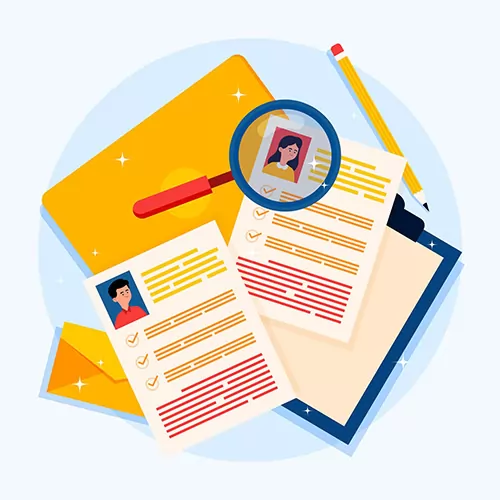Things to Include
It is important to include the following information.
Contact details (ideally at the top)
- Include your name, address, contact no. and email address.
- Make sure your email address is a professional one and avoid using any nicknames and random words. Set up a new one if you have to.
- State your degree and speciality so it’s clear to see the role you are looking for.
- If you have a LinkedIn profile, include a link to this. Make sure it’s up to date and clean.
Personal statement / introduction
This is the first section the recruiter / school will read so it must be tailored to the job you are applying for and state clearly why you are applying for the post. Include an explanation as to why you chose to go into teaching, it’s really important for the recruiter/school to understand this as it helps them to get to know you better. They want to see your passion and enthusiasm for teaching and education as a whole.
Make your speciality clear rather than just stating ‘PGCE’. Include the name of your subject, key stage or specialism. Make reassurance of why you are the right candidate by providing evidence from past work experiences and your studies. Your examples should show how you can add value and make a difference.
Qualifications in chronological order
- List all your academic achievements starting from the furthest to the most recent.
Work experience in chronological order
- Mention your teaching placements; this will be invaluable so make it count in your CV. The school / recruiters will be keen to hear about the type of school (size, setting etc), the subject, ages and curriculum taught, as well as any responsibilities outside of the classroom. You should also include this information in your personal profile to make sure recruiters pick up on vital information during their initial scan.
- Transferable skills – a high level of experience is something ECTs will not have, and it makes sense as they are just beginning their teaching career. However, it is key to demonstrate your most valuable transferable skills. Using any of your previous work experience (this may be a full-time role in another industry or a part-time job alongside your studies), list the transferable skills you developed which could relate to teaching.
- Include any other roles you may have already held, even if they are not related to Education. Recruiters will always favour you more if you have transferable skills and can show you have a strong work ethic.
- List these experiences from the furthest to the most recent.
- With each point, demonstrate the experiences/skills you have gained; for example, if you had to deal with a difficult customer. Use the STAR model to ensure you keep your explanation brief and straight to the point.
S - First describe the Situation you were in
T - Describe the Task that was involved
A - Next describe the Action you took and skills used (be certain to say 'I' not 'we' when explaining this - employers want to know what YOU did, not the wider team)
R - Finally, explain what the Result was and how long it took to achieve
Additional interests /hobbies
Recruiters and schools want to know what you are like as a person too. This will help them gauge if you would fit into the school. They want to know what interests you, your characteristics and any hobbies you may have. If you’ve volunteered or participated in any extra-curricular activities that are relevant and work appropriate list these and explain briefly what you did.
Tailor the CV to the school
It can be tempting to send the same CV for multiple posts. But this won’t do you any favours. Tailor your CV to the school so that the examples you provide are relevant and reflect the job description, the school’s needs, ethos and culture. By demonstrating how you can help support the school, make a difference and help to achieve their goals you will be more favourable.
There are various places where you can find information about the school:
- The school’s website is a good starting point
- Read the Ofsted reports for the school and review achievement tables from the Department of Education to see how well the school is doing
- Google the school to see if they have been in the local press at any point
- Find the school on social media sites such as Facebook and Twitter to see what they have been doing
References
You do not need to include these, a simple ‘references available upon request’ is fine.
Digital footprint
Your CV is not the only way a school or recruiter can find out information about you. In today’s digital world you can be easily found on social media or via simple Google search.
You could end up being the perfect candidate for the role, with glowing references and a faultless interview technique – but if they find something questionable on social media posts online, you might jeopardise your chances. Make sure you are careful about what you post online and what you are tagged in. For peace of mind, it’s best to keep your profile as private as possible.
Of course, this doesn’t mean you can’t have a personal life. Just make sure you watch what you post online, un-tag inappropriate photos and keep social media profiles as private as possible.
Proofread, proofread and proofread
A high level of written communication is expected from teachers. Therefore, it’s vital you check your CV several times, at different times of the day making sure you have no distractions around you. It’s good to have a break from it and checking it after a day or two. Also ask a friend to double it check for you.
Good Luck!



